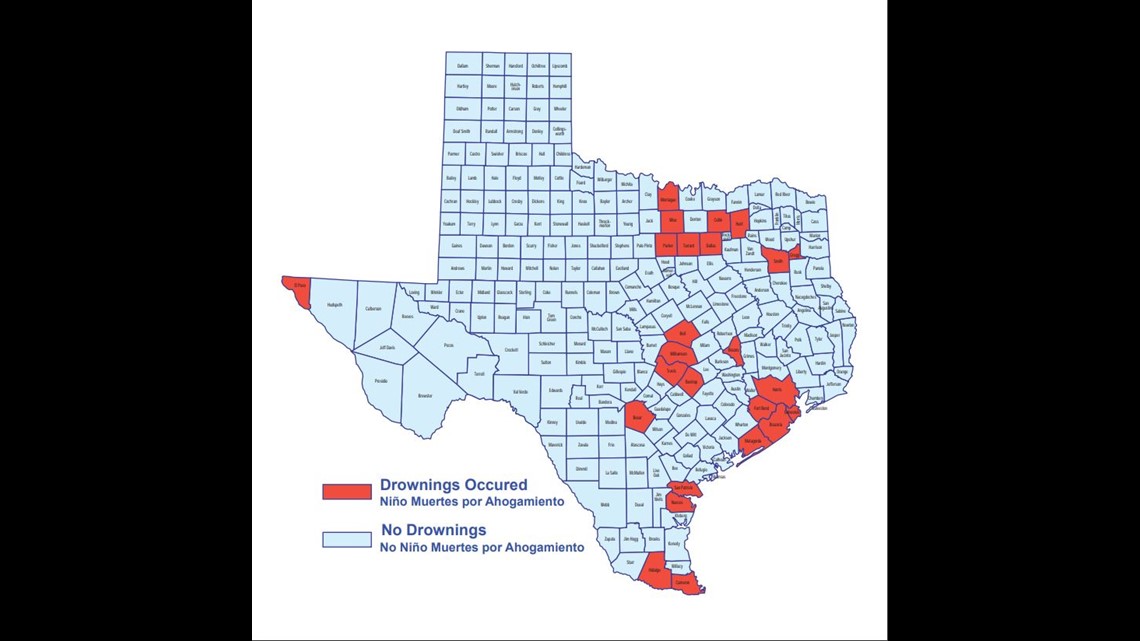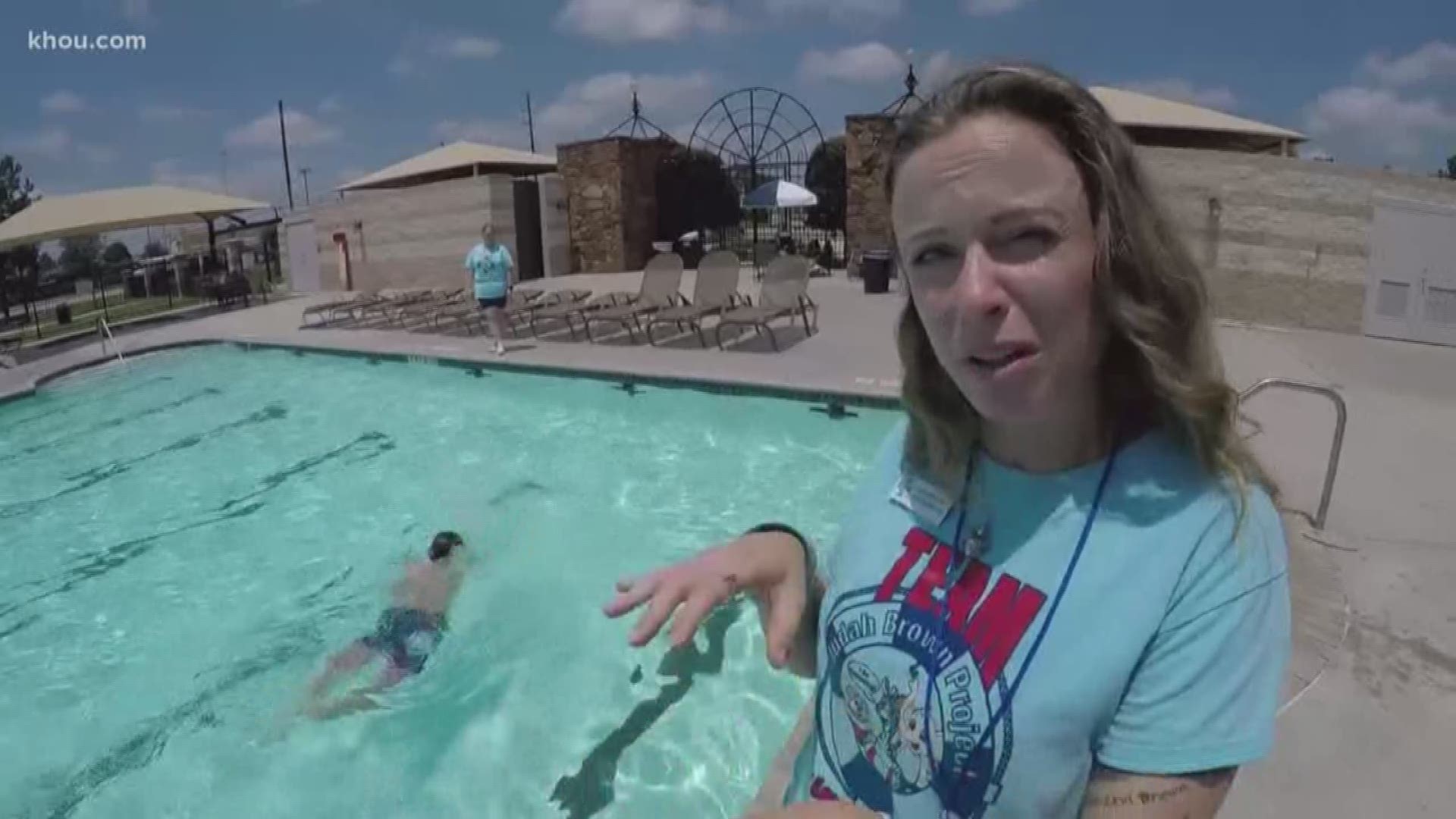TOMBALL, Texas — Today, much of Texas feels like temperatures are in the triple digits.
Between the humidity and the blazing sun, a lot of people are finding relief in the swimming pool.
The Judah Brown Project is working to make the pool as safe as possible.
Judah Brown's mom, Christi, understands the risks. At 3 years old, Judah was fearless in floaties and a water baby at heart. The Tomball toddler loved to swim. In September 2016, after he had slipped off his floaties to spend time with his family at a barbecue, Judah ended up sneaking back into the pool.
He drowned.
"I think I get my strength from seeing these kids not knowing what do in the water to being able to be fully capable of saving themselves," said Christi Brown.
The Browns are using their son's memory to drive home their mission. The Judah Brown Project, a non-profit organization, offers training for CPR and survival swim.
Survival swim training teaches a child to turn over on their back and float while in the pool. Children as young as 6 months old can learn the skill.
"I think the cost is a big barrier," said Annette Courtney, who founded the Judah Brown Project. "Also not knowing. Not knowing that flotation devices give a false sense of security to children."
The project is offering scholarships to help at least 40 families learn survival swim. Donations to the non-profit will drive up the number of scholarships given and information shared.
The project just teamed with the Houston Health Department to raise awareness about just how deadly it can be when a child does not know how to survive in the water.
The state of Texas reports 40 children have drowned in Texas as of June 17.


So if you're heading to the pool know that these four things will boost a child's safety:
Designate a “water watcher.” This adult is responsible for keeping their eyes on all children in the water and should be free of all distractions — including cell phones and socializing. The “water watcher” should be switched every 15 minutes to avoid attention fatigue.
Teach children to swim. Survival swimming lessons teach children self-rescue techniques to help prevent water accident deaths. Traditional swimming lessons teach children proper swimming strokes.
Learn CPR. Become certified in CPR and update your skills annually. It could save the life of your child or another person.
Have proper barriers. Ensure the fence around your pool is at least five feet tall with a self-closing and self-latching gate. Make sure doors and windows to the pool are always locked and alarmed. Install a pool alarm to alert you when anyone goes into the water.
To learn more about the Judah Brown Project, tap here.




